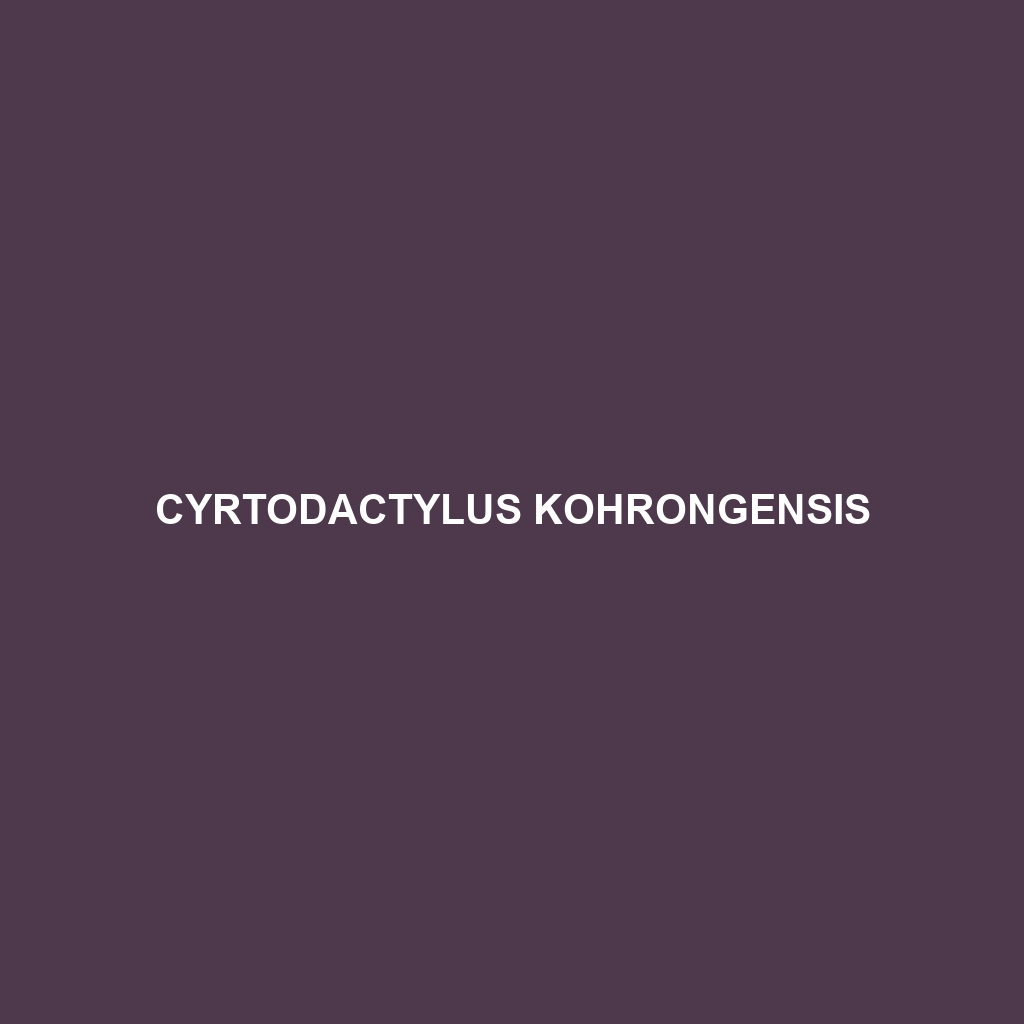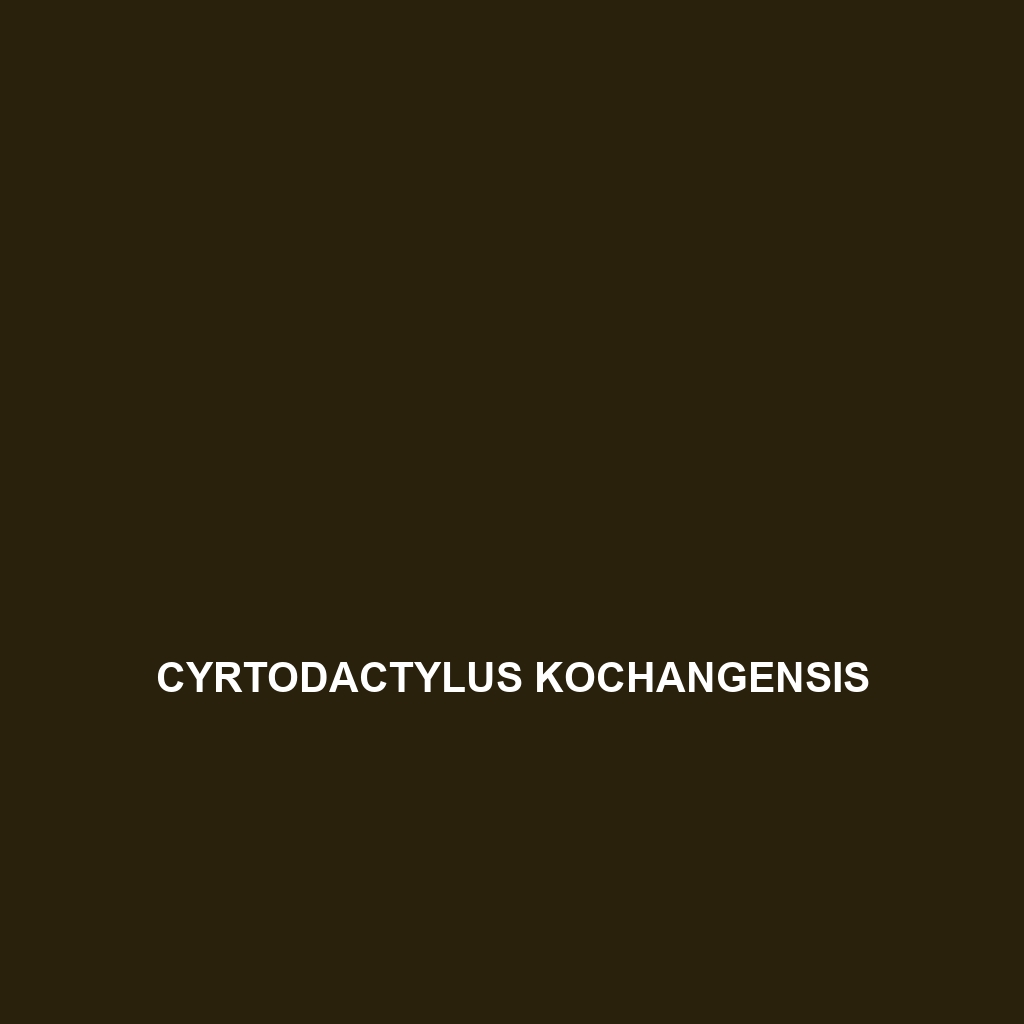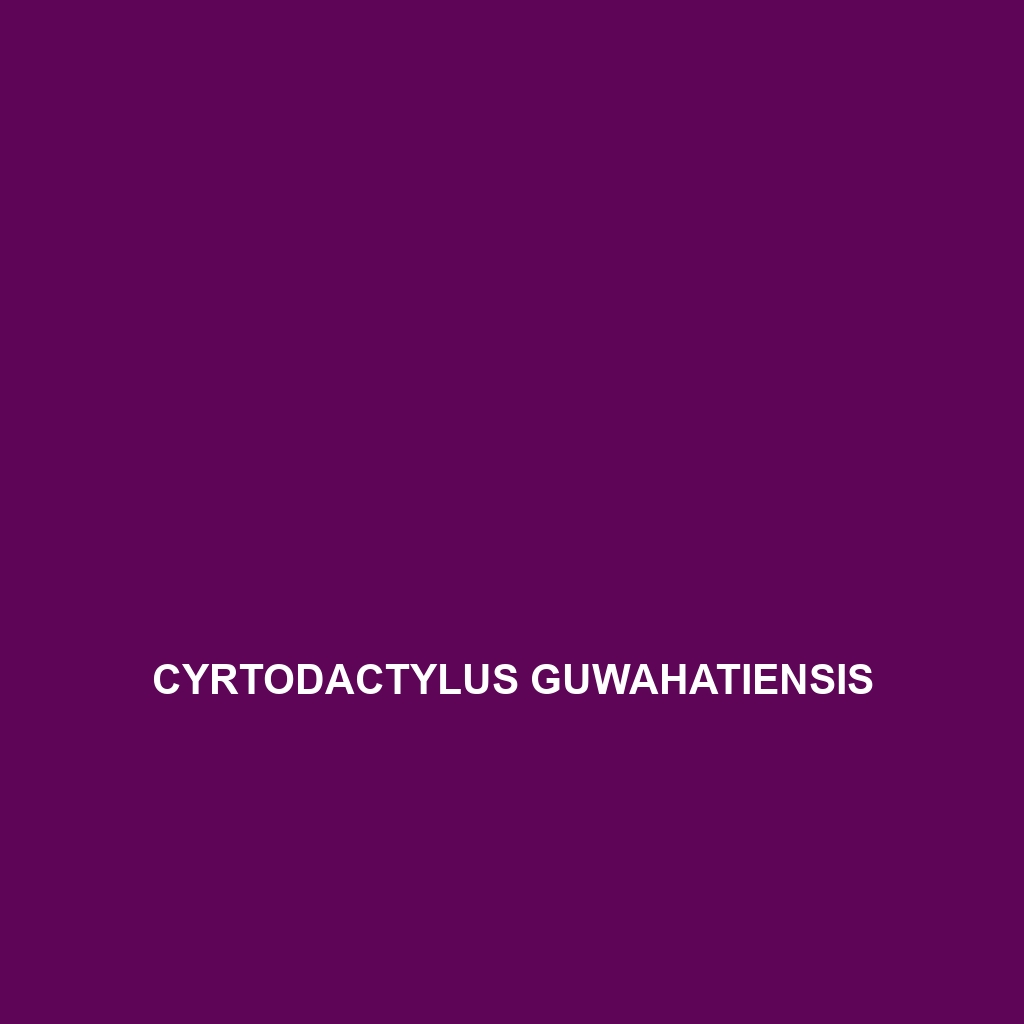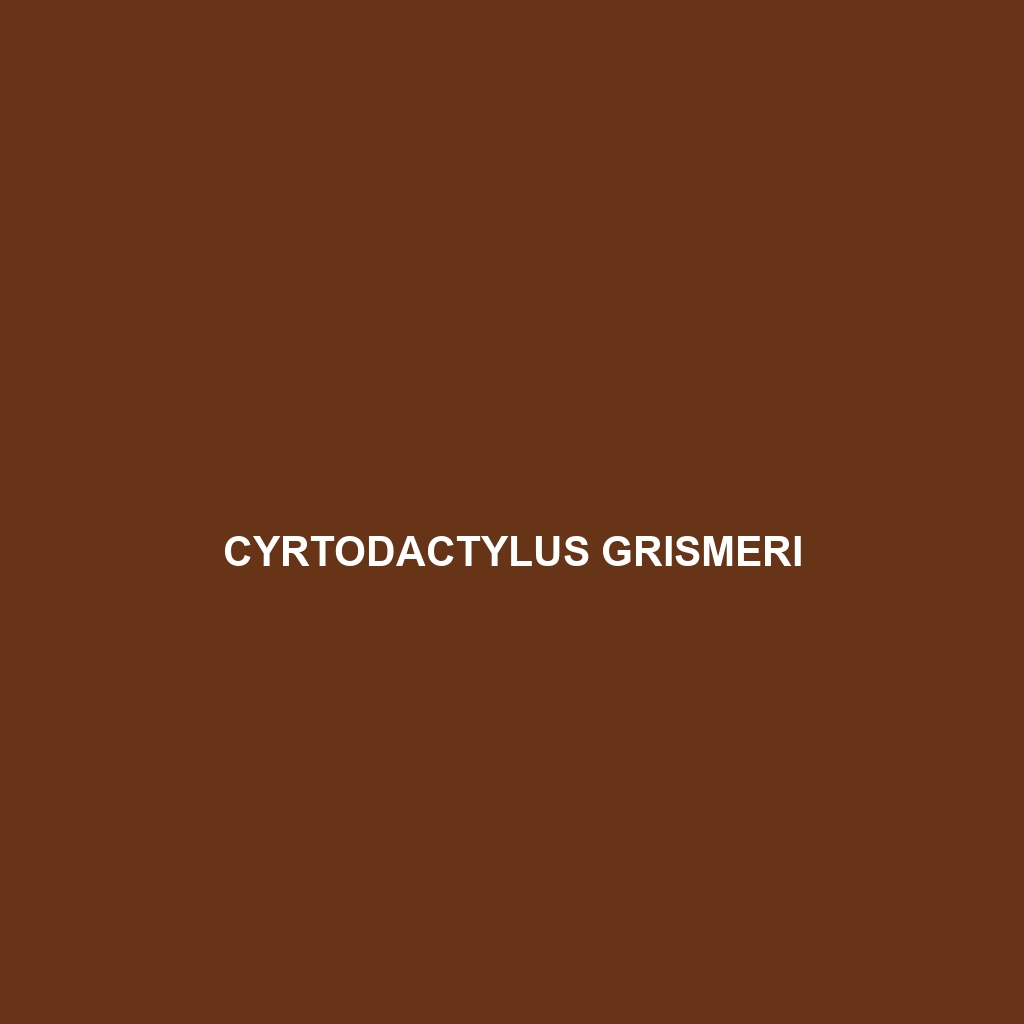-

Cyrtodactylus lateralis
Cyrtodactylus lateralis, also known as the lined bent-toed gecko, is an agile, nocturnal species found in the moist forests of Southeast Asia, characterized by its slender body, distinct stripes, and climbing ability. This insectivorous gecko plays a crucial role in maintaining ecological balance and exhibits fascinating behaviors, including tail shedding as a defense mechanism.
-

Cyrtodactylus kulenensis
Cyrtodactylus kulenensis, a vulnerable species native to the Kulen Mountain Range in Cambodia, is a nocturnal gecko measuring 10 to 15 cm with light brown to yellowish coloration and dark brown spots. These agile insectivores thrive in humid tropical forests, playing a crucial role in the ecosystem as both predator and prey.
-

Cyrtodactylus kohrongensis
Experience the fascinating Cyrtodactylus kohrongensis, a vulnerable gecko native to Koh Rong Island, Cambodia. This nocturnal species, measuring 10 to 15 cm, excels in camouflage with its pale brown color and dark banding, thriving in rocky, humid tropical forests while playing a crucial role in regulating insect populations.
-

Cyrtodactylus kochangensis
Cyrtodactylus kochangensis, a vulnerable nocturnal lizard native to the limestone caves and tropical forests of Southern Thailand. With its color patterns and insectivorous diet, this agile predator plays a crucial role in its ecosystem.
-

Cyrtodactylus kazirangaensis
The Cyrtodactylus kazirangaensis, a vulnerable gecko native to Kaziranga National Park in Assam, India, typically measures 15 to 20 cm in length and exhibits a brown and gray coloration that aids in camouflage. Nocturnal and territorial, this species preys on insects, playing a crucial role in controlling insect populations and maintaining ecological balance.
-

Cyrtodactylus hutan
Cyrtodactylus hutan is a medium-sized, nocturnal gecko native to the tropical forests of Southeast Asia, characterized by its slender frame, rounded toe pads, and subtle camouflage patterns. This insectivorous species is vital for maintaining ecological balance, but it faces threats from habitat loss and is currently classified as vulnerable.
-

Cyrtodactylus hekouensis
Cyrtodactylus hekouensis, a vulnerable gecko native to the tropical forests of southern China, showcases impressive climbing abilities and distinct coloration, thriving in karst limestone formations. Primarily nocturnal, these agile predators play a crucial role in controlling insect populations within their ecosystem.
-

Cyrtodactylus guwahatiensis
Cyrtodactylus guwahatiensis, a gecko from Assam, India, known for its distinctive coloration and nocturnal behavior. This vulnerable species thrives in subtropical forests and plays a crucial role in controlling insect populations while serving as prey for larger predators.
-

Cyrtodactylus grismeri
Discover the Cyrtodactylus grismeri, also known as Grismer’s bent-toed gecko, a small (up to 10 cm) nocturnal gecko native to the lush, humid forests of Southeast Asia. With its unique brown and gray camouflage, agile climbing abilities, and role in controlling insect populations, this vulnerable species is a vital part of its ecosystem.
-

Cyrtodactylus evanquahi
The Cyrtodactylus evanquahi, known for its medium size (20-25 cm) and distinctive brown and gray patterns, thrives in the humid tropical forests of Malaysia and Indonesia. This nocturnal insectivorous gecko plays a crucial role in its ecosystem, aiding in insect population control while facing vulnerabilities due to habitat loss.
Search
Popular Posts
-
Lygosoma corpulentum
Discover the Lygosoma corpulentum, or fat skink, a robust insectivorous lizard native to Southeast Asia’s moist tropical rainforests and varying habitats. With a stocky body, impressive camouflage, and remarkable adaptability, this ovoviviparous species plays a crucial role in maintaining ecological balance.
-
Lygosoma boehmei
Lygosoma boehmei is a slender, nocturnal insectivore found in humid tropical rainforests and savannas of Southeast Asia, exhibiting a smooth, camouflaging texture and remarkable burrowing abilities. This vulnerable species plays a crucial role in its ecosystem by controlling insect populations and serving as prey for larger predators.
-
Lygosoma bampfyldei
Lygosoma bampfyldei, commonly found in tropical and subtropical regions, is a moderately sized lizard measuring 15 to 25 cm, known for its elongated body and glossy, camouflage coloration. This insectivorous species thrives in moist habitats and plays a vital role in maintaining ecological balance by controlling insect populations.
Categories
Tags
animal adaptations (924) animal behavior (5000) animal reproduction (865) behavior (920) biodiversity (7853) conservation (1670) conservation efforts (1778) conservation status (5748) diet (2104) ecological balance (2087) ecological role (1952) ecosystem (1469) ecosystem role (2901) endangered species (2514) habitat (3280) habitat conservation (1136) Habitat Destruction (1421) habitat loss (3385) herpetology (870) insectivorous reptiles (948) IUCN Red List (1971) lizard behavior (881) lizard diet (944) lizard reproduction (1101) nocturnal animals (2754) nocturnal behavior (2592) nocturnal reptiles (1061) physical characteristics (2058) predator-prey relationships (927) reproduction (2890) reptile behavior (1037) reptile conservation (1348) reptile reproduction (1069) rodent species (1325) seed dispersal (2145) Seed Disperser (979) small mammals (1168) snake behavior (952) snake diet (1061) snake reproduction (1129) tropical forests (948) Vulnerable Species (4926) wildlife (2511) wildlife conservation (5355) wildlife protection (1008)


